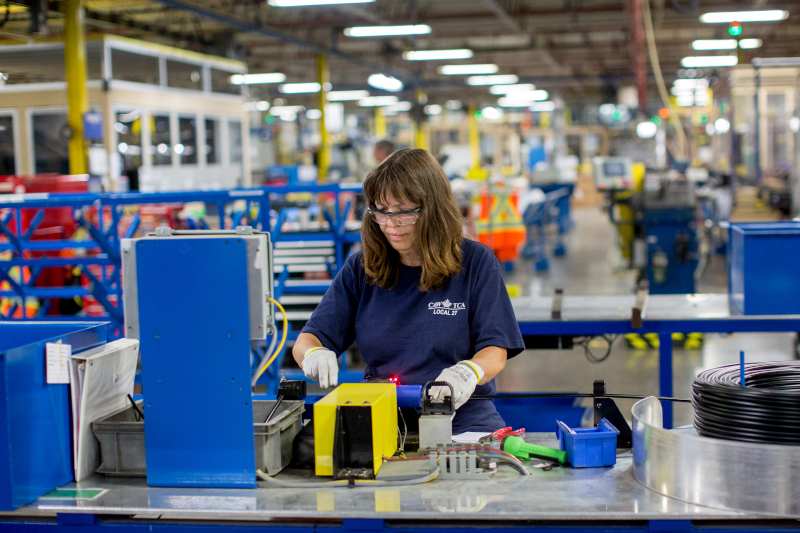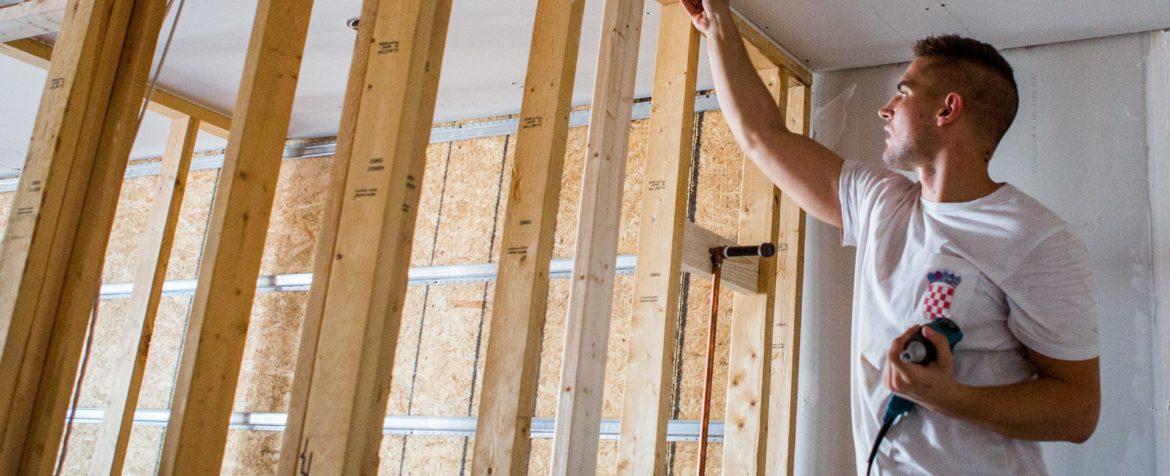Western Ontario Wardens Caucus
Meeting All Its Priorities to assure a prosperous future
Representing the specific needs of rural communities with a strategic plan in mind
The Western Ontario Wardens Caucus Inc. (WOWC) is a not-for-profit organization that represents 15 rural counties in the Western Ontario region. This area stretches from Simcoe County in the northeast region down into Essex County in the southwest.
This region covers almost half a million square kilometers (+/- 310,000 miles) of territory, 25,000 kilometers (+/- 15,500 miles) of roads, more than 3,000 bridges, and 24,000 culverts.
These counties are located on the outer perimeter of Toronto and are referred to as the ‘donut’ surrounding the metropolis. WOWC represents one and a half million residents, and the purpose of the caucus is to enhance the prosperity and overall well-being of the small, urban and rural communities.
The belief is that by working together as 15 counties representing 1.5 million people, the WOWC can do impactful work, compared to individual counties working alone in isolation.
Working collectively, the WOWC can drive forward community issues, concerns, and challenges for the region at the Federal and Provincial levels.
The WOWC really got the ball moving in 2017. Kate Burns Gallagher, WOWC Executive Director, elaborates, “I would say that the organization really started moving forward with strong momentum back in 2017 with the development of their Economic Development Strategy. Since then, the WOWC has added other priorities.”
The caucus has thought carefully about the agenda as we enter a new fiscal calendar year. Coming up with a strategic plan that covers key components including affordable housing, workforce development, broadband rollout, the topic of mental health and the related topic of addiction are chief among them.
WOWC has pursued these issues, as well as being involved in advocacy efforts and building strategies around workforce development at a regional level. Addressing broadband connectivity has also been high on the agenda.
Like many in North America, the region has numerous shared issues, including a growing need for a workforce to build homes. This was already a highlighted concern of the WOWC before the pandemic.
But post-COVID, this need has grown immensely, and it’s down to the region’s demographic.
“We are seeing a significant number of retirements with fewer people available to move into the vacant positions. In rural regions of Western Ontario, by 2030, an estimated 214,000 jobs will need to be filled. Attraction of newcomers to the region and engaging our existing workforce will be key moving forward,” says Burns Gallagher.

This is a huge task and is made more daunting with the southern area of Ontario opening Canada’s first electric vehicle manufacturing plant. With this influx of new workers to the area, a lack of housing becomes a problem.
WOWC reached out to the provincial government and received funding from the Ontario Labor Market Partnership to complete a workforce strategy. The strategy also includes looking at attainable housing.
These homes aren’t geared toward low-income housing or social housing. The strategy focused on attainable homes for the workforce. And the need is high; this strategy indicated that by 2040 the area will need 174,000 housing units.
The WOWC administers a predominantly rural area. And with the high volume of homes that need to be built and workers coming to the area, the WOWC needs to answer, “What will that look like?”
The WOWC’s strategy outlines the need to find ways of engaging politicians, county councils, communities, and employers in the region to discuss housing solutions now.
This conversation could be about infill properties, or empty pieces of property, and discussing how to put housing there. It would also include expanding the conversation and getting buy-in from locals to start thinking about this new expansion and the inclusion of new residents, as Gallagher puts it,
“We need locals to say yes, I’m willing to talk about development in our backyard rather than saying not in our backyard. And by accomplishing this, get all 15 planners from each county to share their best practices and find solutions to the issues that are starting to arise.”
Combining the two priorities of WOWC was a ‘chicken or egg’ situation, where both issues need to be addressed simultaneously. Workers need homes, but they also need to build them. The two priorities are intertwined and can’t be viewed as individual issues.
The next priority is improving broadband in rural areas, where it can be notoriously unreliable. Currently, WOWC is working with Swift (Southwestern Integrated Fibre Technology) to lay fiber lines in the area.
Swift has been working on connecting the area to fiber for two years and has connected 64,000 homes and businesses, which has required serving customers along 4,250 kilometers of road (2,640 miles).
The company has invested CA$ 250 million in fiber infrastructure. This has surpassed all previous targets and the project will be completed in 2023, after which the WOWC will be looking at narrowing the gap in cell coverage.
A lack of consistent cell coverage in rural areas is a constant issue, with reception dropping quickly. This is a large project for the WOWC to focus on next.
The WOWC’s next priority is addressing mental health and addiction in the 15 counties.
Recently, they attended the Association of Municipalities of Ontario conference where members sat down with ministers to have a conversation about the adverse effects on mental health and addiction that the pandemic has had on the smaller rural communities.
As is being experienced across the Province, Southwestern Ontario is facing ever-growing numbers of opioid overdoses and small and rural municipalities are feeling the strains of mental health and addictions in their communities. As part of this priority, WOWC had committed to encouraging coordination and collaboration between regional stakeholders, including the health care and policing sectors, to improve the health outcomes of our most vulnerable.
“We’re just beginning to frame this priority as a region and what we can do. Mental health and addictions are a key priority as we need to support the most vulnerable in our communities,” says Burns Gallagher.
Once again, these priorities are linked to others.
Mental health and addiction are related to housing because when affordable homes aren’t available and people can’t get into the workforce due to a lack of training, this eventually leads to homelessness issues. A lack of accessibility to broadband and education also has a domino effect on mental health.
The WOWC wants to address all of these priorities to ensure that rural communities can become vibrant and healthy.
Another element that the WOWC addresses is long-term care for senior citizens. It’s been a focus for the Western Ontario Women’s Caucus and several other counties to provide proper care throughout the region.
Most government funding is accessed via conferences with ministers, and this is where organizations like WOWC can share with them what is happening on the ground and the best practices for the communities.
WOWC also works with senior staff and regional directors from several different ministries and reports back on how some pilot projects are working in the areas. One such pilot project is WOWC’s workforce strategy, and if it is successful, it will be shared for other communities to roll out.

The data collected from these pilot projects are shared with municipalities via monthly newsletters and bimonthly meetings with members. WOWC’s agendas are also shared at these meetings.
If members miss the email or meetings, they can search for the data on the WOWC website, wowc.ca, and the workforce microsite, which has all the workforce data. In addition, the WOWC also shares this data with the workforce planning board and partners like the Community Futures Workforce Western Ontario and local immigration partnerships.
“By building strong relationships with our partners, we’re able to get the word out about pilot programs. WOWC is all about sharing information that will improve communities, ” Burns Gallagher says.
In the next few years, the WOWC is optimistic but aware that the landscape has changed dramatically after the pandemic.
Over the last two years, there’s been a shift from attracting businesses to welcoming new people to the region. These individuals, as mentioned, will need training.Burns Gallagher says she won’t be surprised if there is a development in regional branding to attract people.
“We need to fill those 214,000 vacant positions. It’s a massive component of the work we’re doing. Our caucus needs to bring our partners and members together to entice people to the area,” says Burns Gallagher.
And for the WOWC itself, over the next three to five years, the focus is to improve the area’s local economy. With good planning and excellent management, the caucus knows that the Western Ontario region will flourish.
AT A GLANCE
Western Ontario Wardens Caucus
What: A regional organization representing the needs of its rural, small-town members
Where: Western region of the Province of Ontario, Canada
Website: https://wowc.ca/



